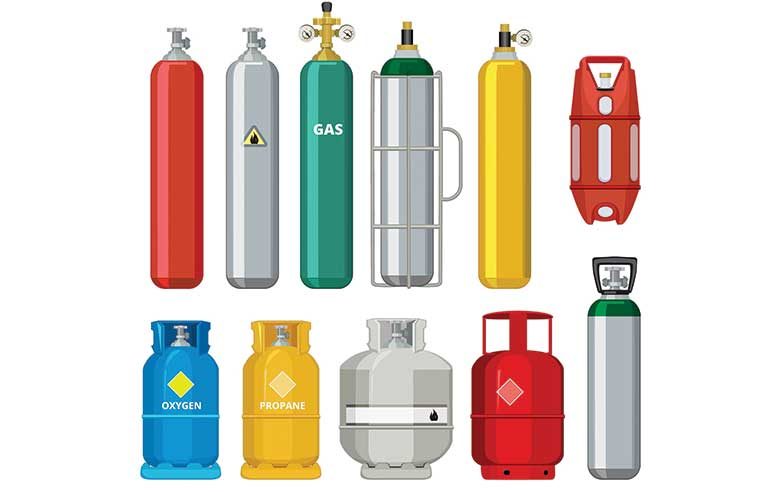Handling and storing compressed gas cylinders

Mishandling compressed gas cylinders – which can have internal pressure of up to 2,500 pounds per square inch – can be disastrous. Dropping, tipping over or exposing a cylinder to heat can cause weaknesses or cracks in the cylinder’s shell, which can result in a shrapnel-laden explosion, according to the American Welding Society.
Storing
When storing compressed cylinders, AWS recommends:
- Secure cylinders upright with a chain or strap in a proper cylinder cart.
- Store cylinders at least 20 feet from combustible materials in a dry, ventilated place.
- Keep oxygen cylinders at least 20 feet from fuel gas cylinders.
- Ensure valves are completely closed and any protection devices are secured.
- Avoid storing cylinders in lockers – a leak could result in a dangerous gas buildup.
- Use proper warning signs in areas where cylinders are stored.
- Keep cylinders in a location free from vehicle traffic, excessive heat and electrical circuits.
- Keep empty cylinders away from full ones.
Moving
The majority of incidents and injuries involving gas cylinders occur during handling or transportation, AWS states. To help prevent incidents when moving cylinders, AWS offers the following tips:
- Handle cylinders with care and avoid dropping or hitting them against anything.
- Follow proper procedures and use the right equipment, including safety glasses, heavy-duty gloves and protective footwear.
- Ensure safety measures, such as caps or guards, are securely installed.
- Use a cart or hand truck instead of dragging or rolling cylinders.
- Use proper cradles, nets or platforms if using a crane.
- Avoid lifting cylinders by their caps or guards or with magnets or slings, which can damage the valves.

